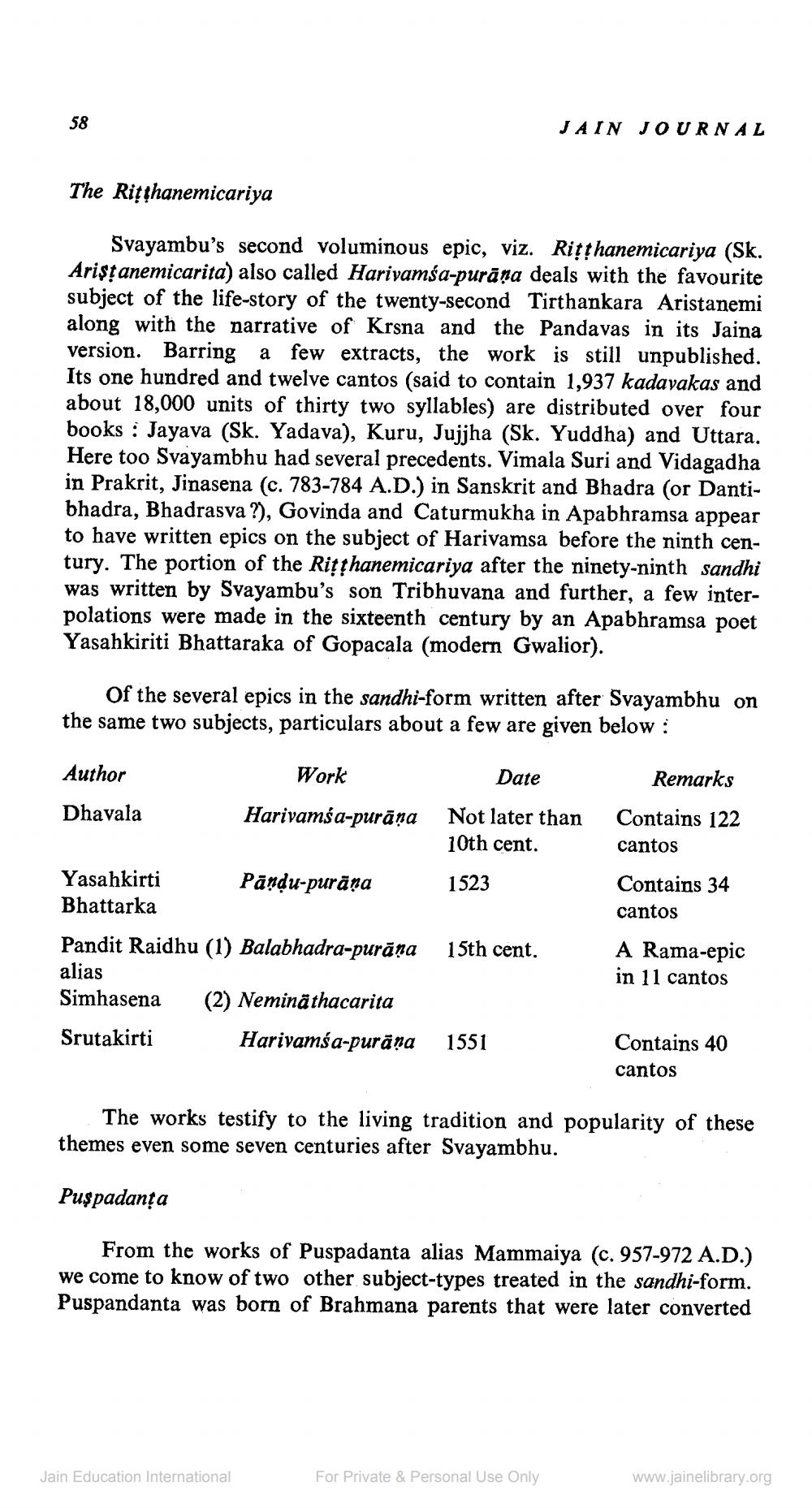________________
58
The Ritthanemicariya
Svayambu's second voluminous epic, viz. Riṭṭhanemicariya (Sk. Arişṭanemicarita) also called Harivamsa-purana deals with the favourite subject of the life-story of the twenty-second Tirthankara Aristanemi along with the narrative of Krsna and the Pandavas in its Jaina version. Barring a few extracts, the work is still unpublished. Its one hundred and twelve cantos (said to contain 1,937 kadavakas and about 18,000 units of thirty two syllables) are distributed over four books Jayava (Sk. Yadava), Kuru, Jujjha (Sk. Yuddha) and Uttara. Here too Svayambhu had several precedents. Vimala Suri and Vidagadha in Prakrit, Jinasena (c. 783-784 A.D.) in Sanskrit and Bhadra (or Dantibhadra, Bhadrasva ?), Govinda and Caturmukha in Apabhramsa appear to have written epics on the subject of Harivamsa before the ninth century. The portion of the Riṭṭhanemicariya after the ninety-ninth sandhi was written by Svayambu's son Tribhuvana and further, a few interpolations were made in the sixteenth century by an Apabhramsa poet Yasahkiriti Bhattaraka of Gopacala (modern Gwalior).
Of the several epics in the sandhi-form written after Svayambhu on the same two subjects, particulars about a few are given below:
Author
Dhavala
Yasahkirti
Bhattarka
Work Harivamsa-purāṇa
Pāṇḍu-purāṇa
Pandit Raidhu (1) Balabhadra-purāṇa 15th cent.
alias
Simhasena
Srutakirti
(2) Neminathacarita
JAIN JOURNAL
Date
Not later than 10th cent.
1523
Jain Education International
Harivamsa-purāṇa 1551
Remarks
For Private & Personal Use Only
Contains 122 cantos
Contains 34 cantos
A Rama-epic in 11 cantos
The works testify to the living tradition and popularity of these themes even some seven centuries after Svayambhu.
Contains 40 cantos
Puspadanța
From the works of Puspadanta alias Mammaiya (c. 957-972 A.D.) we come to know of two other subject-types treated in the sandhi-form. Puspandanta was born of Brahmana parents that were later converted
www.jainelibrary.org




